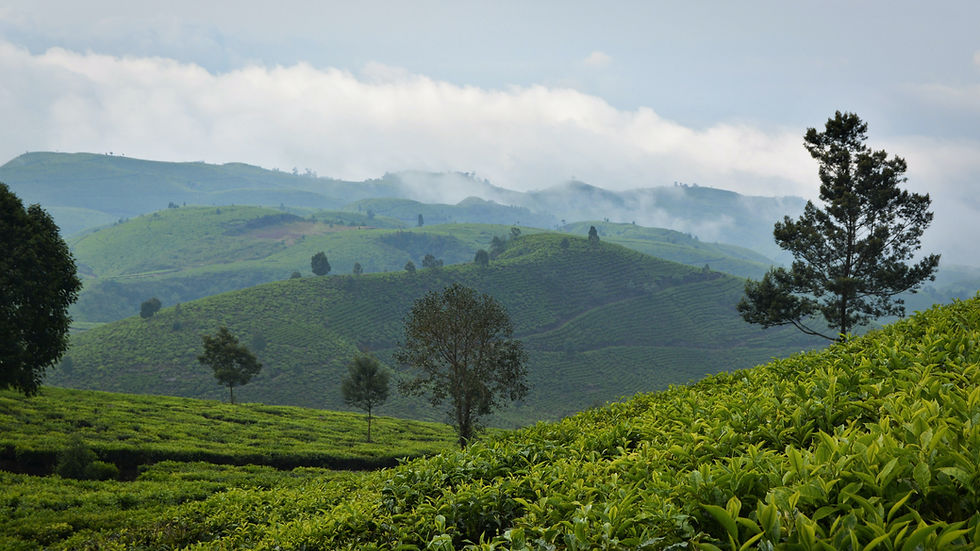Magnesium Sulphate Heptahydrate Fertilizer in Sri Lanka, Indonesia, and Malaysia – For Tea, Rubber, Palm, and Coffee
- Editor Agriculture today
- Aug 17
- 4 min read
Magnesium Sulphate Heptahydrate (MgSO₄·7H₂O), also called Epsom Salt or Sulfate of Magnesia, is a fertilizer that gives two very important plant nutrients: Magnesium (Mg) and Sulfur (S). Both are essential for healthy crops.
In Southeast Asia—especially in Sri Lanka, Indonesia, and Malaysia—many plantations face problems of magnesium deficiency because of high rainfall, acidic soils, and heavy use of fertilizers like potassium (K). Crops like tea, rubber, oil palm, and coffee lose large amounts of magnesium every season through harvests. That is why Magnesium Sulphate Heptahydrate is widely used here as a fast, safe, and effective fertilizer.
This article explains why farmers need Magnesium Sulphate Heptahydrate, what it does for crops, and how to use it properly in Sri Lanka, Indonesia, and Malaysia.

Why crops need Magnesium Sulphate Heptahydrate
High rainfall washes nutrients away
In Sri Lanka, Malaysia, and Indonesia, heavy rains wash magnesium deep into the soil. This makes it unavailable for plants.
Acidic soils reduce magnesium availability
Most plantation soils are acidic. This makes magnesium less available to roots.
High potassium fertilizers create imbalance
Crops like tea, palm, and rubber need a lot of potassium (K). But when too much potassium is used, it blocks magnesium uptake.
Harvest removes nutrients every season
When tea leaves, coffee beans, palm bunches, and rubber latex are harvested, magnesium is taken away from the field.
Magnesium Sulphate Heptahydrate solves all these problems because it provides magnesium in a fast, soluble, and easy-to-absorb form, along with sulfate sulfur which plants also need.

What Magnesium Sulphate Heptahydrate does for plants
Greener leaves & more photosynthesis
Magnesium is the central part of chlorophyll, the green pigment that makes food in plants. More magnesium = greener leaves = more photosynthesis = higher yields.
Better movement of sugars and oils
Magnesium helps move sugars made in leaves to other parts of the plant. This is very important for crops like oil palm (for oil), rubber (for latex), and coffee (for beans).
Stronger plant growth and resistance
With proper magnesium and sulfur, crops resist stress better, leaves stay healthy longer, and quality improves.
Extra sulfur supply
Sulfur is needed to make proteins and certain flavors in tea and coffee. The sulfate in Magnesium Sulphate Heptahydrate is immediately available.
Magnesium deficiency symptoms in crops
Tea (Sri Lanka, Malaysia)
Yellow areas between veins of older leaves.
Reduced number of flushes.
Poor tea leaf quality and dull liquor.
Rubber (Malaysia, Indonesia)
Older leaves turn pale.
Early leaf drop.
Thinner latex flow.
Oil Palm (Indonesia, Malaysia)
Yellow or orange spots on older fronds.
Narrower leaflets.
Small fruit bunches and lower oil recovery.
Coffee (Indonesia, Sri Lanka)
Yellowing of older leaves.
Premature leaf drop.
Uneven fruit ripening.
Applying Magnesium Sulphate Heptahydrate corrects these problems quickly, especially when sprayed as foliar.

Country Focus
Sri Lanka (Tea estates)
Soils in the hill country are acidic and leached, which causes serious magnesium deficiency.
Tea bushes also need lots of potassium for yield, which increases magnesium shortage.
Using Magnesium Sulphate Heptahydrate:
Soil: 50–150 kg per hectare in 2–3 splits per year.
Foliar spray: 1.5–3% solution (15–30 g per liter of water), 2–3 times every 2–3 weeks.
Results: Greener tea leaves, more flushes, better cup quality, higher yield.
Indonesia (Oil Palm and Coffee)
Indonesia has huge oil palm estates and large coffee areas.
Soils are sandy and acidic; heavy rainfall washes nutrients away.
Oil Palm:
Soil: 1–2.5 kg per palm per year, split into 2–4 applications.
Foliar: 2–3% solution for fast recovery.
Results: Healthier fronds, more fresh fruit bunches, higher oil extraction rate.
Coffee:
Soil: 100–300 g per tree per season.
Foliar: 1.5–2% solution before flowering and after fruit set.
Results: More uniform ripening, better bean filling, stronger plants.
Malaysia (Oil Palm and Rubber)
Malaysia is a leading producer of palm oil and natural rubber.
Both crops remove large amounts of magnesium from the soil.
Oil Palm:
1–2 kg per palm per year, more on sandy or peat soils.
Regular leaf analysis (frond 17) helps decide exact dose.
Rubber:
150–300 kg per hectare per year in 2–3 splits.
Foliar sprays at 1.5–2% can quickly green up leaves.
Results: Higher latex flow, stronger leaves after refoliation, better long-term tree health.
Crop-specific benefits

Tea
Why: High potassium use, leached soils, continuous plucking.
What Magnesium Sulphate Heptahydrate does: Increases leaf greenness, improves plucking rate, enhances flavor and liquor quality.

Rubber
Why: Continuous latex tapping needs good carbohydrate movement.
What it does: Helps sugars move to bark for latex production, keeps tapping panels active longer.

Oil Palm
Why: Large bunches remove heavy nutrients, especially Mg.
What it does: Prevents orange spotting, increases bunch size, improves oil quality and recovery.

Coffee
Why: Shade-grown and sun-grown coffee both suffer from magnesium deficiency.
What it does: Improves flowering, fruit set, bean development, and prevents leaf drop.
How to apply Magnesium Sulphate Heptahydrate
Soil application: Broadcast or band around the root zone; split into 2–4 doses to reduce leaching.
Foliar spray: 1.5–3% solution (15–30 g per liter of water); apply in cool hours for best absorption.
Fertigation: Because it is very soluble, Magnesium Sulphate Heptahydrate is excellent for drip irrigation.
Advantages over other magnesium sources
Faster than dolomite: Dolomite lime works slowly and only adds Mg when it changes soil pH. Magnesium Sulphate Heptahydrate works immediately.
More soluble than kieserite: Kieserite is slower to dissolve. Heptahydrate is quick and ideal for spraying.
Balanced nutrition: Provides both magnesium and sulfur together.
Tips for farmers
Test soil and leaves regularly to check magnesium levels.
Apply in split doses during the year to prevent losses from rain.
Combine with potassium carefully; too much K blocks Mg uptake.
Use foliar sprays for fast correction during visible deficiency.
Store in dry conditions; Magnesium Sulphate Heptahydrate is hygroscopic (absorbs moisture).



Comments